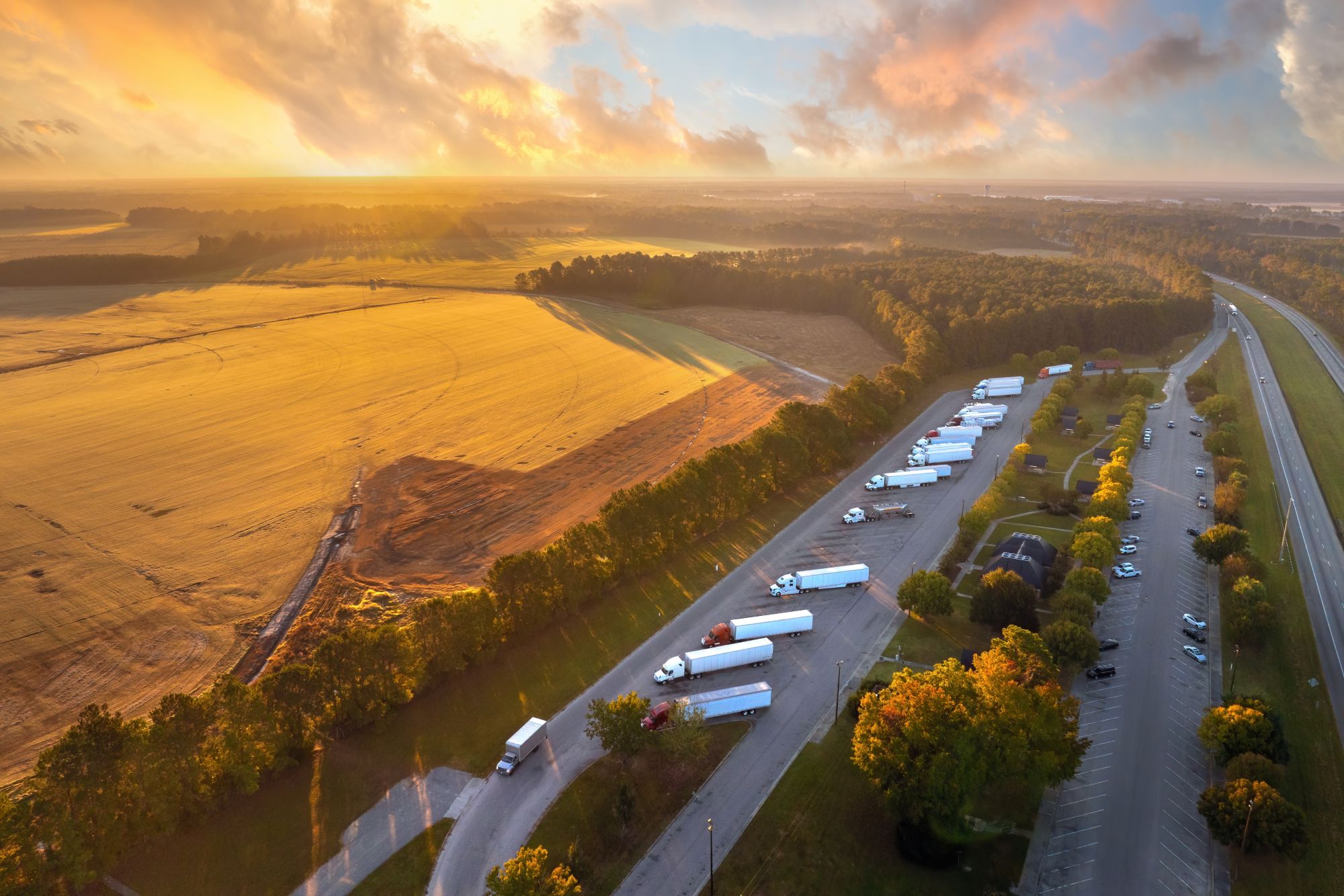
Guest
Come diventare autista di camion
Creato: 26/09/2025
•
Aggiornato: 26/09/2025
In tutta Europa, la domanda di autotrasportatori professionisti non è mai stata così alta. Nel Regno Unito, la Road Haulage Association stima che saranno necessari 200.000 nuovi autotrasportatori nei prossimi cinque anni per mantenere in funzione le catene di approvvigionamento. E la situazione è la stessa in gran parte dell'Europa. Secondo i dati dell'International Road Transport Union, nel 2024 in Europa c'erano 426.000 posti di autista non coperti.
Ma questo crea un'opportunità. Come abbiamo esplorato in precedenza, l'industria del trasporto merci offre la prospettiva di un lavoro stabile per chi ha abbandonato la scuola e sta valutando alternative all'università e per gli adulti che vogliono riqualificarsi. Diventare autista di camion è un percorso che porta a guadagni sicuri e a una carriera strutturata.
La domanda che molti si pongono è: come diventare autista di camion? La risposta non dipende solo dalla formazione e dalle licenze, ma dalla comprensione di ciò che significa entrare a far parte di una professione che fa muovere l'economia europea.
Chi può diventare autista di camion?
Una delle principali attrattive della carriera di autista è la sua accessibilità. Non è necessario avere una laurea o anni di formazione specialistica per iniziare; è sufficiente una patente di guida standard (categoria B) prima di lavorare per ottenere le qualifiche professionali.
L'età minima per la formazione è di 18 anni sia nel Regno Unito che in tutta l'Unione Europea, il che significa che i diplomati possono passare direttamente dalla patente per auto alla formazione professionale per autisti di mezzi pesanti. Tuttavia, molte aziende preferiscono che gli autisti internazionali abbiano almeno 21 anni, data la maggiore responsabilità che comporta il trasporto su lunghe distanze.
Anche l'idoneità medica è importante. Ogni candidato deve superare un esame medico prima di poter ottenere una patente di guida per mezzi pesanti. Nel Regno Unito, questo comporta una serie di test, tra cui controlli della vista, letture della pressione sanguigna e screening di condizioni come epilessia, malattie cardiache o apnea del sonno.
Le nazioni europee applicano gli stessi standard medici a livello europeo, con rinnovi regolari che assicurano che i conducenti rimangano in salute per tutta la loro carriera.
Quanto guadagna un autista di camion?
Per molte persone che stanno pensando di passare alla guida professionale, una preoccupazione fondamentale è: quanto guadagnano gli autisti di camion?
La risposta varia a seconda del luogo, dell'esperienza e del tipo di lavoro svolto, ma in tutta Europa questa professione offre una retribuzione competitiva rispetto ad altri lavori di base.
Un nuovo autista nel Regno Unito di solito inizia con circa 27.000 sterline all'anno. Chi passa al lavoro a lungo raggio, soprattutto sulle rotte internazionali, può veder crescere la propria retribuzione fino a 45.000 sterline, a volte di più se trasporta carichi speciali o pericolosi. chi movimenta carichi speciali, merci pericolose o opera oltre confine.
In Spagna, gli stipendi tendono a essere più bassi rispetto al Regno Unito, in genere intorno ai 36.600 euro, anche se le grandi aziende di logistica nelle grandi città possono offrire di più.
Negli ultimi anni la Polonia (https://pln.currencyrate.today/convert/amount-92400-to-eur.html) ha registrato una forte domanda di autisti, ma i salari rimangono modesti, con una media di circa 92.400 PLN (circa 21.690 euro).
● [Romania] (https://www.erieri.com/salary/job/heavy-truck-driver/romania#:~:text=Salary%20Recap,and%20anonymous%20employees%20in%20Romania.) si colloca all'estremità inferiore della scala, con gli autisti che generalmente guadagnano 80.550 RON (16.000 euro), anche se i contratti di trasporto internazionale possono aumentare significativamente lo stipendio.
Naturalmente, lo stipendio non è tutto. Molte aziende offrono straordinari, pasti o bonus per aver raggiunto gli obiettivi di consegna. Inoltre, dato che la domanda di autisti non mostra segni di rallentamento, questo lavoro offre un livello di sicurezza che poche altre carriere entry-level possono eguagliare.
Di quale patente di guida per autocarri ho bisogno?
Prima di poter guidare un camion, è necessario avere la patente giusta. Nel Regno Unito, ciò significa andare oltre la normale patente di guida per autoveicoli e ottenere quella che è ufficialmente nota come patente per veicoli commerciali di grandi dimensioni (LGV) o per veicoli commerciali pesanti (HGV). I termini sono spesso usati in modo intercambiabile, ma entrambi coprono le stesse categorie di guida professionale.
Alcuni iniziano con una patente di categoria C1, che copre i veicoli di medie dimensioni tra le 3,5 e le 7,5 tonnellate, spesso utilizzati per i piccoli camion per le consegne.
Tuttavia, la maggior parte degli aspiranti autisti di camion passa direttamente alla patente di categoria C, talvolta chiamata patente HGV di classe 2. Questa patente consente di guidare veicoli rigidi di peso superiore a 7,5 tonnellate. Questa consente di guidare veicoli rigidi di peso superiore a 7,5 tonnellate. Per coloro che desiderano passare agli autoarticolati, i veicoli più grandi comunemente utilizzati sulle lunghe distanze e sulle rotte internazionali, è necessaria la patente di categoria CE (Classe 1).
A queste qualifiche si affianca il Certificato di competenza professionale del conducente (CPC), un requisito legale sia nel Regno Unito che nell'UE. Questo certificato prevede un mix di formazione iniziale e di aggiornamento periodico, progettato per mantenere i conducenti aggiornati su sicurezza, normative e competenze stradali.
Questo sistema rispecchia il quadro delle licenze a livello europeo. Le principali differenze tra i Paesi riguardano i fornitori di formazione, i costi e, in alcuni luoghi, la disponibilità di posti di prova.

Come ottenere la patente HGV
Ottenere la patente HGV è il primo passo verso la guida professionale. Nel Regno Unito, è possibile iniziare il processo una volta in possesso di una patente standard di categoria B per autoveicoli. Da qui si richiede una patente provvisoria per autocarri, che consente di iniziare la formazione sui veicoli commerciali di grandi dimensioni.
La formazione combina elementi teorici e pratici: sessioni in aula sulla sicurezza stradale e sulle normative, seguite da una guida supervisionata su veicoli pesanti. I candidati devono anche completare i moduli per il Certificato di Competenza Professionale del Conducente (CPC), che assicura che i conducenti siano equipaggiati non solo per operare in sicurezza sui veicoli, ma anche per gestire le esigenze quotidiane del trasporto.
Quanto costa diventare autista di camion?
Una delle domande più frequenti per chi prende in considerazione questa carriera è quanto costa la formazione per autisti di camion. Nel Regno Unito, i prezzi variano a seconda dell'ente erogatore, del luogo in cui ci si trova e del fatto che ci si stia formando per una patente di categoria C o per la più avanzata categoria CE. In media, i nuovi conducenti possono spendere tra le 2.000 e le 3.500 sterline per coprire i controlli medici, le tasse per la patente provvisoria, gli esami teorici, la formazione pratica, i moduli CPC e l'esame di guida finale. Alcune aziende, in particolare quelle di logistica più grandi, offrono programmi per sovvenzionare o finanziare completamente la formazione in cambio di un impegno lavorativo, rendendo il percorso più accessibile.
Nel resto d'Europa, le cifre non sono molto diverse. In Spagna, la formazione costa generalmente tra i 2.000 e i 3.000 euro per la formazione completa e la certificazione. In Polonia, la cifra è più bassa, con una media di 1.500-2.500 euro. In Romania i costi di formazione sono tra i più bassi d'Europa: molti candidati pagano circa 1.000-1.800 euro per qualificarsi, anche se i salari iniziali tendono a riflettere questa minore barriera all'ingresso.
Quanto tempo ci vuole per diventare autista di camion?
Il tempo necessario per ottenere la qualifica di autista di camion dipende dal luogo in cui si svolge la formazione, dal tipo di patente a cui si mira e dalla rapidità con cui si riesce a ottenere le date degli esami. Nel Regno Unito, la maggior parte delle persone completa la formazione e supera gli esami entro due o quattro mesi. Alcuni corsi intensivi comprimono il processo in poche settimane, anche se molti conducenti trovano che distanziare le lezioni li aiuti ad assorbire le competenze in modo più efficace.
In Spagna e Polonia il processo è simile, anche se le liste d'attesa per gli esami possono allungare i tempi. In Polonia, l'elevata domanda di conducenti professionisti ha creato colli di bottiglia nei centri di formazione, per cui alcuni candidati attendono diversi mesi prima di sostenere l'esame pratico. La Romania ha uno dei percorsi più rapidi, con formazione ed esami spesso completati in otto-dodici settimane.
E l'apprendimento non si ferma una volta ottenuta la patente. Ogni conducente professionista deve completare 35 ore di formazione CPC ogni cinque anni, per mantenere le proprie competenze aggiornate e assicurarsi di essere pronto per le normative e gli standard di sicurezza più recenti.
Per quanto tempo può guidare un camionista?
Una volta ottenuta la qualifica, il lavoro prevede limiti severi per quanto riguarda il tempo che si può trascorrere al volante. Questi limiti sono pensati per proteggere sia i conducenti che gli altri utenti della strada, riducendo l'affaticamento.
Nel Regno Unito e nell'UE le regole sono le stesse. I conducenti possono trascorrere un massimo di nove ore al volante ogni giorno, che può essere esteso a dieci ore due volte alla settimana. I limiti settimanali sono di 56 ore di guida, con un massimo di 90 ore in due settimane consecutive.
Il conducente deve inoltre fare una pausa di almeno 45 minuti dopo 4,5 ore di guida. Ha inoltre diritto a periodi di riposo giornalieri e settimanali per recuperare prima di tornare al lavoro.
Queste regole sono strettamente monitorate, con tachigrafi montati sui veicoli per registrare le ore e garantire la conformità. Per coloro che lavorano su percorsi a lunga distanza, come gli autisti spagnoli che coprono la penisola iberica o i trasportatori polacchi che spostano le merci attraverso i confini orientali dell'UE, questi limiti modellano il ritmo del lavoro. Determinano quando e dove gli autisti si fermano, rendendo l'accesso ad aree di riposo sicure e protette una parte vitale della giornata lavorativa.
Iniziare a lavorare come autista di camion
Diventare autista di camion non significa solo superare gli esami. Si tratta di entrare in un ruolo che comporta responsabilità reali, ma anche opportunità a lungo termine. Con la giusta patente, la giusta formazione e la determinazione ad affrontare la vita sulla strada, si tratta di una carriera che può offrire stabilità e progressione.
Noi di SNAP sappiamo come devono essere questi viaggi. Ecco perché lavoriamo con flotte e autisti in tutta Europa per renderli più sicuri, semplici e confortevoli: da parcheggi sicuri e migliori strutture di assistenza a strumenti digitali intelligenti che fanno risparmiare tempo e stress. Sia che siate alle prime armi o che guidiate da anni, siamo qui per sostenervi in ogni momento del vostro percorso.
Scaricate oggi stesso la app intruck per trovare parcheggi, strutture e servizi di fiducia, ovunque vi porti il vostro percorso.



